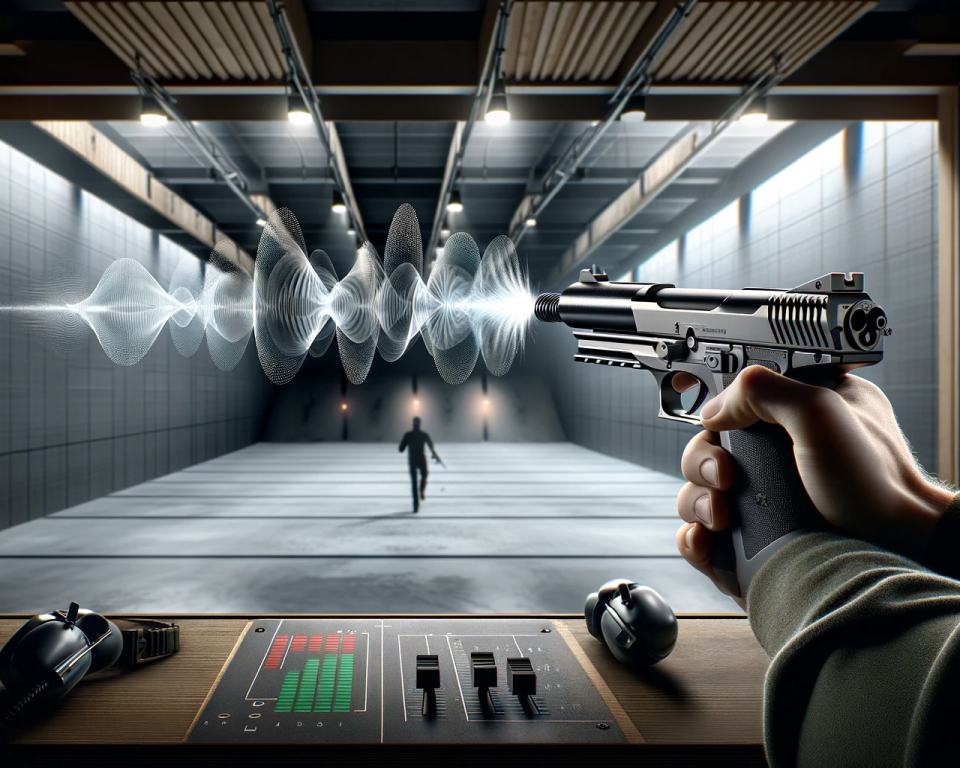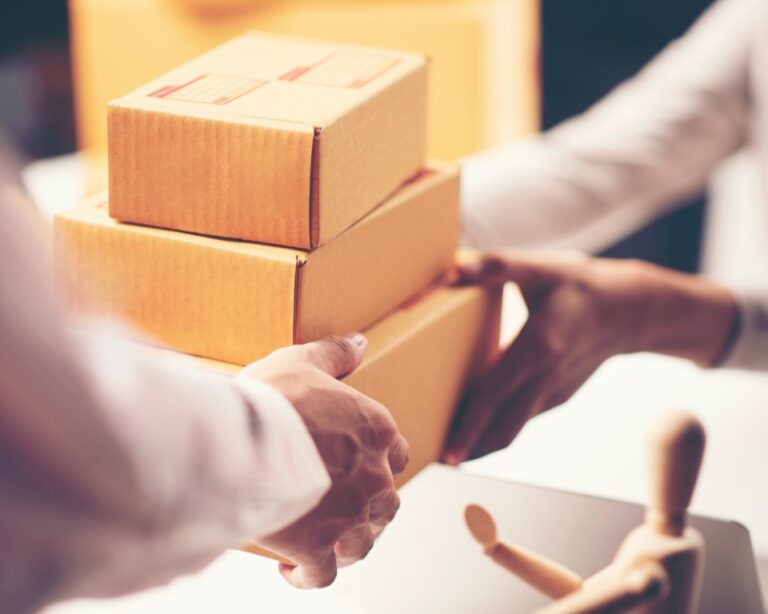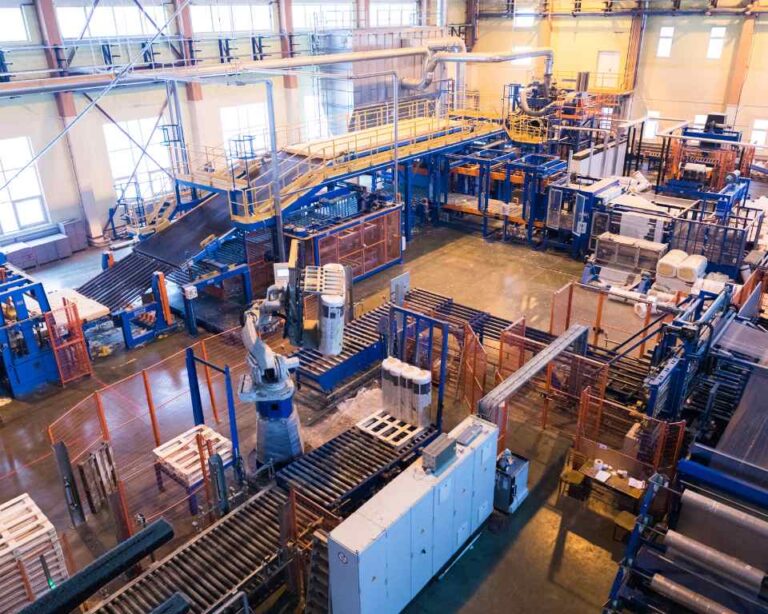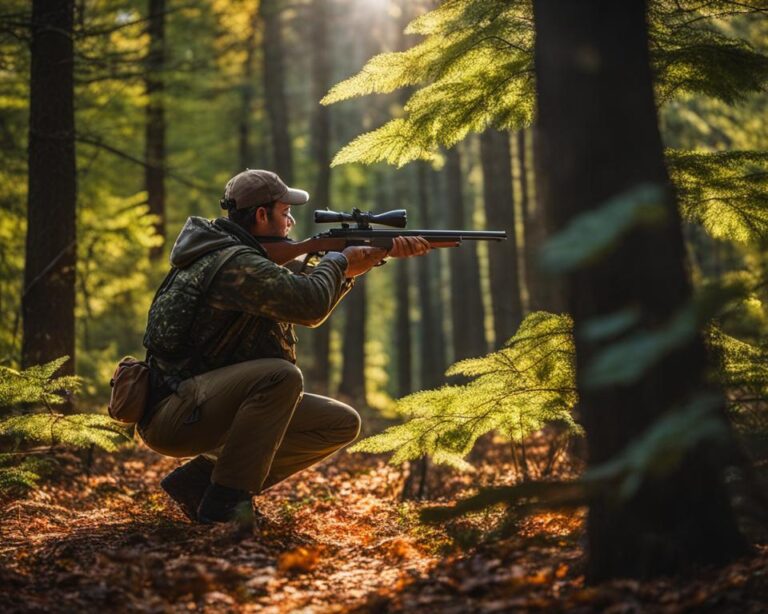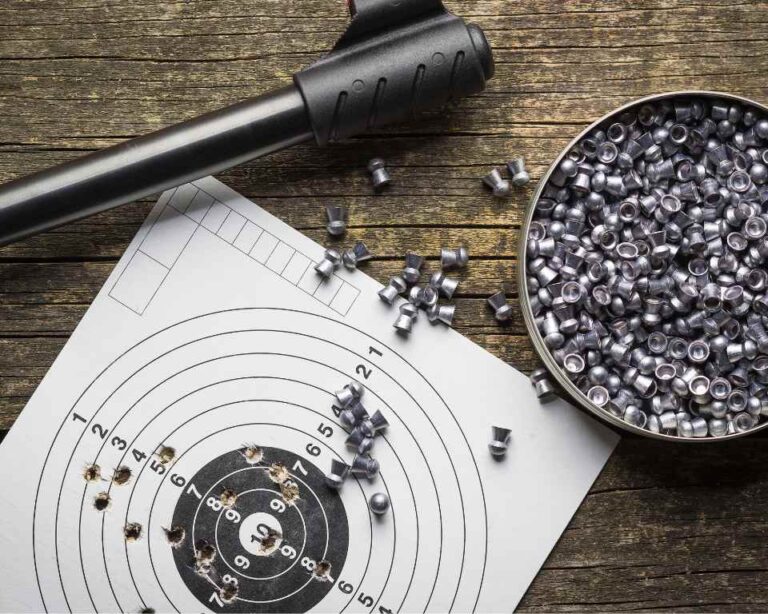The Noise Factor: How Loud Are Airguns?
When it comes to the noise levels of airguns, there are several factors to consider. While they are generally quieter than traditional firearms, it’s important to understand the various aspects that contribute to their sound output.
Measuring airgun noise involves taking into account the environment, sensor placement, and different types of noise produced. These include mechanical noise, shot noise, and impact noise. It’s worth noting that PCP (pre-charged pneumatic) airguns can produce high sound levels comparable to traditional firearms, while springers tend to be quieter.
Not only is the noise level of an airgun relevant for considerations of noise pollution, but it can also impact hunting success. Loud shots have the potential to startle game before the projectile reaches its target, leading to a missed opportunity.
Understanding airgun noise levels is essential for both responsible shooting and selecting the right airgun for your needs.
Key Takeaways:
- Airguns are generally quieter than traditional firearms, but their noise levels can still vary.
- Factors such as mechanical noise, shot noise, and impact noise contribute to overall airgun sound.
- PCP airguns can produce high sound levels comparable to traditional firearms.
- Loud shots can startle game before the projectile reaches its target.
- Understanding airgun noise levels is crucial for responsible shooting and choosing the right airgun for your needs.
Factors Affecting Airgun Noise Levels
When it comes to airgun noise levels, several factors come into play. Understanding these factors can help you select the right airgun for your shooting needs and minimize disruptive noise. Let’s take a closer look at the key factors affecting airgun noise:
Mechanical Noise
One factor that contributes to airgun noise is mechanical noise. This refers to the sound produced by the moving parts within the airgun, such as the spring or gas ram. Different airgun models may have varying levels of mechanical noise, which can impact overall noise levels.
Shot Noise
Another important factor is shot noise, which is the sound produced at the muzzle when the shot is fired. Spring guns generally have minimal shot noise, while PCP airguns can be significantly louder due to their larger air volume and higher pressures. Understanding the shot noise level of your airgun is essential for shooting scenarios where noise reduction is a priority.
Impact Noise
Impact noise refers to the noise produced when a pellet hits a target or backstop. The type of backstop material used can influence the level of impact noise generated. It’s essential to consider the noise created upon impact, especially in scenarios where shooting quietly is necessary, such as hunting or shooting in residential areas.
Selecting the Right Airgun
Considering these factors allows you to select an airgun that aligns with your noise requirements. For example, if shooting in a location with strict noise regulations or where game startle response is a concern, opting for an airgun with minimal mechanical noise, shot noise, and impact noise can help mitigate noise-related issues.
Now that we have explored the factors affecting airgun noise levels, let’s delve deeper into airgun noise measurement techniques in the next section.
A Closer Look at Airgun Noise Measurement
Accurately measuring airgun noise is crucial for understanding and comparing the noise levels produced by different airguns. The decibel (DB) scale is commonly used to quantify sound intensity, and it can provide valuable insights into the overall noise level of an airgun. However, there are several factors that need to be considered when conducting airgun noise measurements to ensure the accuracy and reliability of the results.
One of the key considerations in airgun noise measurement is the scientific method employed. Measurements should be conducted using standardized protocols and calibrated equipment to ensure consistency and repeatability. This allows for accurate comparisons between different airgun models and eliminates potential variations due to measurement techniques.
The environmental conditions in which the measurements are taken also play a crucial role. To obtain reliable results, it is important to conduct the measurements in a controlled environment with minimal environmental interference. This helps eliminate external factors that could affect the noise levels, such as wind, temperature, and background noise.
The placement of the sensors is another critical factor to consider. Sensors should be positioned in a way that accurately captures the sound produced by the airgun. This includes determining the appropriate distance and angle from the muzzle, as well as considering the elevation of the sensor placement. Proper sensor placement ensures that the measured sound levels are representative of the actual noise produced by the airgun.
Elevation can also affect airgun noise measurements. As the altitude increases, the air density decreases, leading to changes in sound propagation. This can impact the perceived loudness of the airgun and should be taken into account when comparing noise levels measured at different elevations.
It is important to note that airgun noise measurements can be influenced by environmental interferences. Factors such as the presence of reflective surfaces or nearby structures can result in sound reflections and potentially affect the measured noise levels. Conducting measurements in an environment with minimal interference helps mitigate these effects and ensures more accurate results.
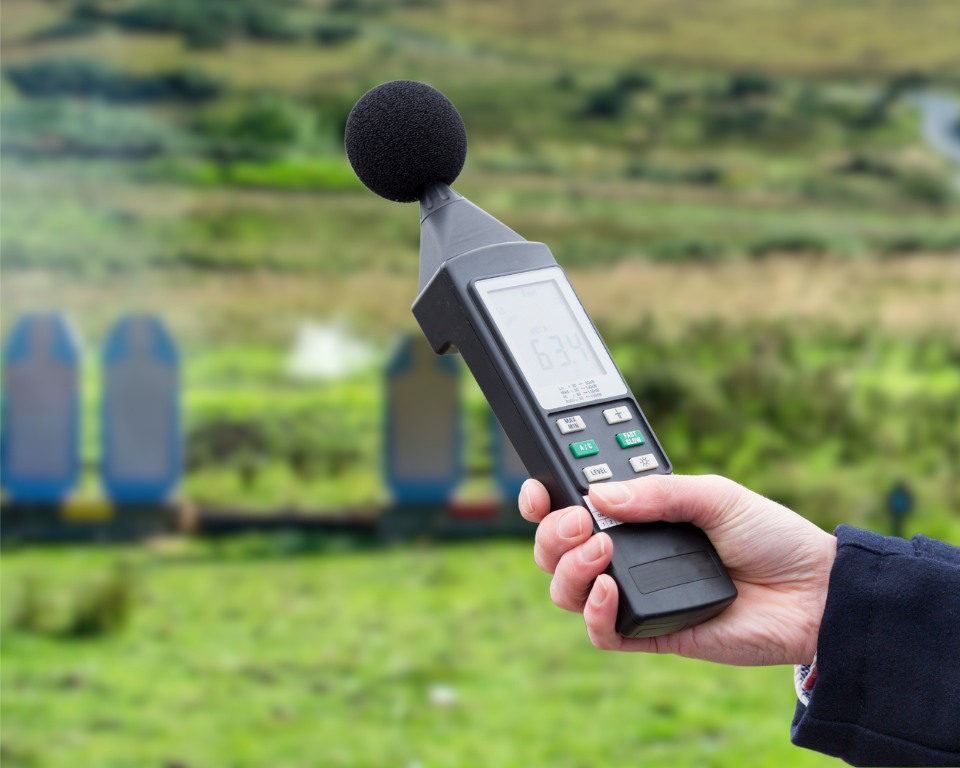
In summary, airgun noise measurement requires careful consideration of the scientific method, controlled environmental conditions, appropriate sensor placement, elevation, and potential environmental interferences. By taking these factors into account, accurate and reliable noise measurements can be obtained, allowing for informed decisions when selecting airguns based on their noise levels.
Quietest Airguns and Noise Reduction Techniques
When it comes to airguns, noise reduction is a top priority for many shooters, whether for personal preference or to comply with legal requirements. Fortunately, there are various techniques and equipment available to help minimize noise and ensure a more enjoyable shooting experience.
Suppressed airguns have become increasingly popular due to their advanced sound suppression technology. These airguns are specifically designed to reduce noise, minimizing both mechanical and shot noise. With the use of suppressors or integral silencers, suppressed airguns provide a quieter shooting experience without compromising performance.
It’s important to keep in mind that while suppressed airguns effectively reduce the noise generated by the gun itself, there are other factors to consider. The noise produced by the target itself can still be a source of sound. For example, steel pellet traps can create a loud noise upon impact. To further minimize noise, choosing the right backstop materials is crucial. Opting for materials that absorb or dissipate the energy of the pellets can help reduce the noise generated upon impact.
Additionally, understanding and complying with legal requirements for shooting in specific locations is essential. Different regions may have their own regulations regarding noise limits, shooting hours, or restrictions on certain types of airguns. Familiarize yourself with local laws and regulations to ensure you’re in compliance and maintain a positive relationship with neighbors and local authorities.
Whether you’re engaged in target shooting or using airguns for pest control, noise reduction techniques play a vital role in creating a more enjoyable and considerate shooting experience. By investing in suppressed airguns, choosing the right backstop materials, and abiding by legal requirements, you can effectively reduce noise and foster a peaceful shooting environment.
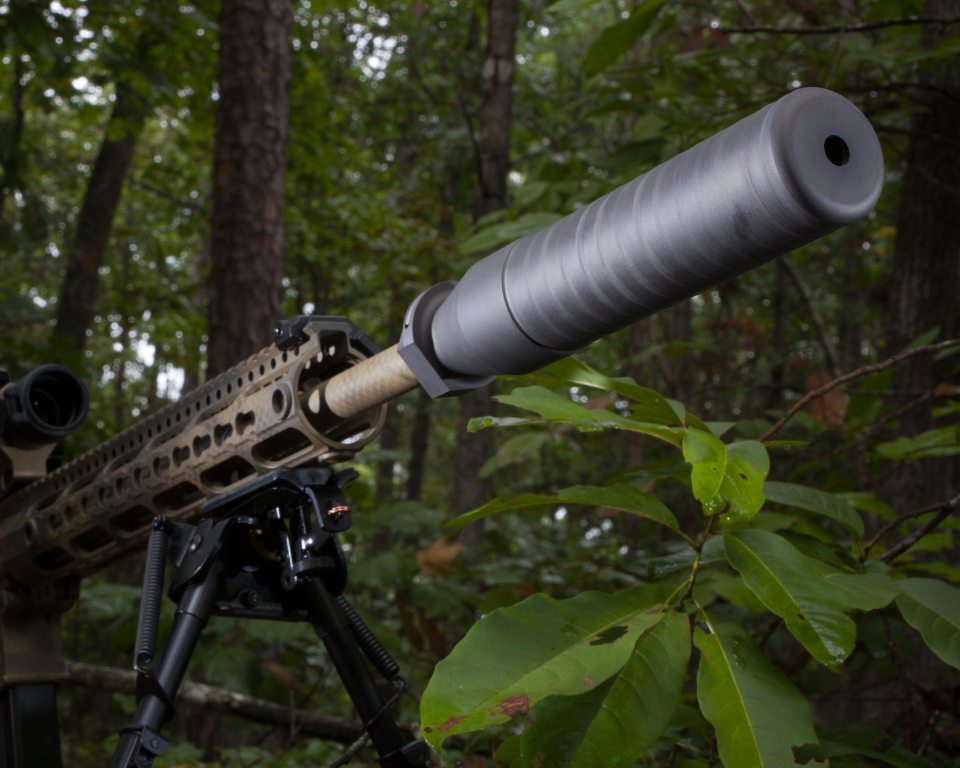
John Doe, Experienced Airgun Shooter, Shares His Thoughts:
“Investing in a suppressed airgun has made a world of difference in my shooting sessions. Not only do I enjoy the reduced noise levels, but it also allows me to stay compliant with local noise restrictions, making it a win-win situation. Additionally, using a proper backstop material has further minimized noise during target shooting, ensuring a more peaceful shooting experience for myself and my neighbors.”
Airgun Noise Comparison and Decibel Levels
When it comes to airgun noise levels, the type of airgun being used plays a significant role. Let’s explore the decibel levels and compare the different airgun options available.
Springers: Spring-powered airguns, also known as springers, tend to be quieter compared to other types. This is because they have limited air volume and produce minimal shot noise. When shooting with a springer, you can expect lower decibel levels, resulting in a quieter shooting experience.
Gas Ram Airguns: Gas ram airguns fall between springers and PCPs in terms of noise levels. They use a gas-filled cylinder instead of a spring, providing more power and consistency. While these airguns may generate slightly more noise than springers, they still offer relatively quiet shooting.
PCP Airguns: PCP airguns, especially big bore models, can produce sound levels comparable to traditional firearms. These airguns use compressed air stored in a reservoir to propel the pellet. Due to the increased air volume, higher pressures, and larger calibers, PCP airguns tend to be louder than springers and gas ram airguns. If you’re concerned about noise levels and plan to shoot in a backyard setting, consider smaller caliber PCPs or explore alternative options.
For noise-conscious backyard shooting, small caliber springers equipped with longer barrels and muzzle breaks are often the quietest choice. These features help reduce noise by maximizing the efficiency of air transfer and dispersing the air more evenly. However, it’s essential to handle the airgun safely and responsibly while ensuring compliance with local regulations.
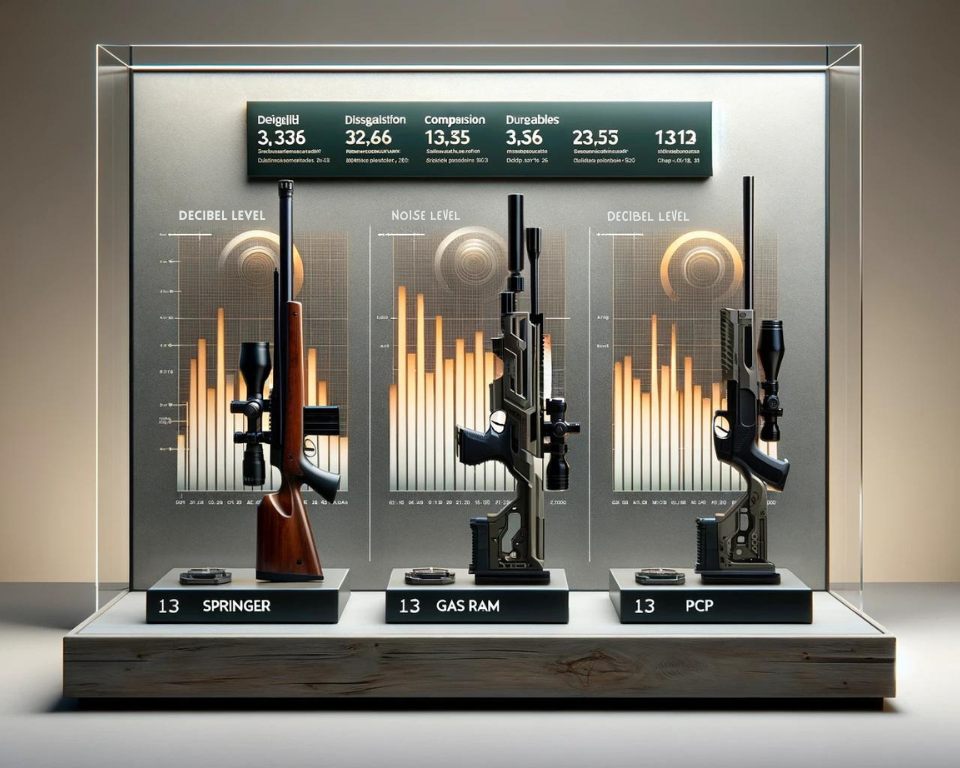
Remember, when selecting an airgun, understanding the noise levels associated with different types can help you choose the most suitable option for your shooting needs. By considering the noise factors, you can enjoy a quieter shooting experience while respecting noise regulations and minimizing disturbance to your surroundings.
Tips for Reducing Airgun Noise
If you’re looking to reduce the noise produced by your airgun, there are several steps you can take. One important aspect is regular cleaning. By keeping your airgun clean and avoiding the use of petroleum-based lubricants, you can minimize noise caused by excess friction and residual oils.
Another factor to consider is choosing the right airgun. Opting for an airgun with a longer barrel length and a muzzle break can help dissipate air and reduce noise. This allows for a quieter shooting experience without compromising on performance.
Additionally, adjusting the power settings or utilizing specific shooting techniques can go a long way in reducing noise. By reducing the velocity of the pellet, you can effectively decrease the noise produced. Experimenting with different techniques can help you find the right balance between power and noise reduction.
Utilizing noise barriers is another effective strategy. Shooting from behind a house or inside a well-padded target box can minimize noise transmission to neighbors. This can help ensure a more peaceful shooting environment and maintain positive relationships with those around you.


